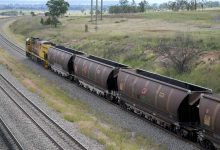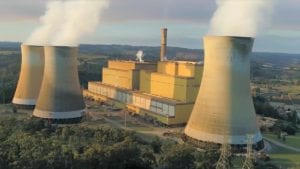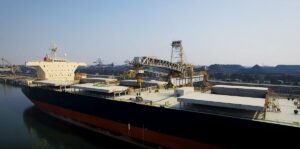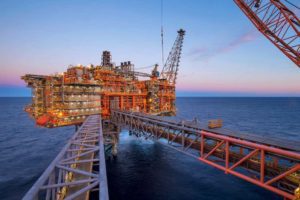Australians are once again galvanized to press for genuine policy action on climate change.
In the nearly 5 years since the repeal of the Clean Energy Act 2011 that established Australia’s carbon pricing system, the challenges facing our economy to transition to low carbon have only grown.
Australia’s coal industry is a big deal. No-one pretends that the global decline of coal is other than dangerous for the Australian economy, for jobs, and for the communities affected. It is a huge economic and social issue we’ve not handled well to date. Denial is rarely an effective risk mitigation strategy.
Ballooning diesel reliance across the economy, and the failure to match it with anything like an adequate fuel reserves strategy, gets much less attention but is an economic and strategic issue of equal gravity, given the pervasiveness of diesel use across all sectors of the economy (including defence).
Even without the increasing supply chain risks from growing geo-political tensions all the way from the Middle East right through the South China Sea, Australia’s diesel addiction, and the failure to address the serious liquid fuel stockpile shortfall, should warrant urgent national debate.
It says a lot that, while Coalition MPs trade blows about coal-fired power stations in Queensland, diesel barely rates mention.
Australia’s largest export commodity in accelerating structural decline, and liquid fossil fuel imports steadily expanding, increasing Australia’s exposure to supply chain risks. All of it carbon-intensive, swimming against an ever-strengthening global tide.
It doesn’t take a Deputy Governor of the RBA to see that this is not a pretty picture. Anyone who takes the time to reflect on these combined risks will come away wondering how a nation so well-endowed with energy resources managed to dig itself into such a very deep hole.
This coal-diesel-carbon triple dilemma goes to the very heart of the productive capacity of our economy, to our security, and to our future prosperity. Adequate risk mitigation to address this ominous situation will require policy responses of corresponding scale, and ambition.
But the fractious state of energy debate means that ‘bold’ is not a word one could readily use to describe energy policy in this country. Caution, incrementalism and tentativeness have been entrenched as the modus operandi in Australian energy policy, particularly in relation to anything that highlights questions about the ongoing primacy of coal.
At a certain point, incremental responses actually compound the risks, because the problem is expanding faster than the responses. There is every indication that, where coal and diesel are concerned, we have already passed that point.
The policy questions we ought to be asking now are not about how to preserve coal exports, but how Australia can replace those exports. Not about how to build larger diesel storage and how to pay for it, but how to replace diesel with something that (a) we don’t have to import and (b) is not a carbon-intensive carcinogen.
The second part of the question we ought be asking is, how can Australia best assist our major trading and security partners in the Asia-Pacific region to address the major energy issues they are facing – energy security, decarbonization, and denuclearization?
If we ask those questions, we would then be led to the real opportunity – the great 21stcentury opportunity on which our policy effort should be invested.
Namely, what can Australia do to drive rapid growth of renewable energy exports, to offset coal’s decline, and at the same time build resilient clean fuel systems domestically to break the imported diesel addiction.
It is a very welcome development therefore that both major parties have in the last 2 months produced policies about export of renewable energy via renewable hydrogen and ammonia.
For those not familiar – renewable hydrogen is renewable energy (solar, wind etc.) stored in the form of hydrogen gas. This is achieved through the process of electrolysis of water, in which water (H2O) is split into hydrogen (H2) and Oxygen (O2) gases, through the application of renewable electricity, a process used in industry for well over 100 years. The hydrogen recovered is stored renewable energy.
Renewable ammonia takes the process one step further by converting hydrogen gas into liquid form, so the stored liquid renewable energy can be efficiently shipped in bulk internationally, just like LNG, but without any carbon.
Renewable hydrogen- ammonia enables storage of renewable energy in the millions of tonnes – at true industrial scale – for domestic use and for shipment offshore to markets across the Asia-Pacific region and beyond.
A new clean energy export industry the scale of our current LNG industry is absolutely possible. The global energy transformation is gaining pace so emphatically that an initiative of this scale is not just realistic, but necessary to meet Asia’s clean energy needs.
Renewable hydrogen-ammonia export is an economic and strategic opportunity commensurate with the scale of the challenges Australia is facing to mitigate the risks of declining coal exports and increasing diesel imports.
It is hard to think of any economic growth opportunity open to Australia today that comes close, either in potential export scale, or in terms of strategic relevance and influence at a critical time in the evolution of geo-politics and security in our region.
Renewable hydrogen links Australia’s unlimited renewable energy resources with the 21stcentury needs of the transport, agriculture, industry and power generation sectors right across the Asia-Pacific region, especially with our key partners including Japan, Korea, Indonesia, Taiwan and Singapore.
It solves for the equations of energy security, decarbonization, and denuclearization for the entire region, including Australia.
Illustrating the scale issue, Australia’s installed power generation capacity is around 54GW. Japan alone has 296GW installed capacity, Korea 103GW, Taiwan 50GW, Thailand 45GW, Indonesia 61GW. These five countries combined have installed power generation capacity ten times that of Australia – over 555GW. Add Australia and the combined market is around 600GW, just for we six countries.
Diesel consumption in 2016-2017 in Japan was 33.4 billion litres, Korea 26.5 billion, Indonesia 33 billion, Thailand 23.6 billion and Taiwan 5.8 billion – over 122 billion litres in aggregate per annum.
Australia’s annual diesel consumption has grown from 19 billion litres in 2011 to 28 billion in 2018 (now a whopping 1,138 litres per person and on a per capita basis nearly 3 times that of Japan). So the same six countries make a diesel market already of over 150 billion litres annually, more than half the size of the EU’s diesel market (260 billion litres pa).
The point is that policies to underpin renewable hydrogen-ammonia use in just six Asia-Pacific economies including Australia would tap into enormous economies of scale – respectively in ten times in power generation, and five times in diesel consumption, Australia’s solo scale.
The International Monetary Fund projects that GDP growth in South Asia and the Asia-Pacific region will outstrip all other regions globally, and underpin global growth, in the period to 2022 (IMF WorldEconomic Outlook 2018).
Physics and arithmetic dictate that if Paris/COP21 targets are to be achieved, across developing Asia the historic connection between GDP growth and coal and diesel consumption will have to be broken as this growth is delivered.
And if that is correct, it reduces Asia’s energy choices down to three – nuclear, fossil fuel with carbon capture, and renewable.
Across much of the ASEAN region, conditions are ill-suited to very large-scale renewable energy production – comparatively poor solar and wind resources, scarcity of land (and competing uses including food production, urbanization and population growth), and monsoonal conditions that are likely to intensify as a consequence of global warming, are all factors.
Carbon capture and nuclear waste storage are, arguably, not realistic options at large scale.
Assuming CCS technology can achieve commercial viability, much of the ASEAN and north Asian region is seismically active, unsuitable for carbon storage on the huge scale required.
Given the problems in the nuclear industry even in established markets such as the Japan, UK, Europe and Scandinavia, and renewed fears of global proliferation risks (including in North Asia and the Middle East), any plans for wide-spread nuclear power generation across the Asia-Pacific region would likely encounter significant obstacles.
Neither nuclear or CCS options should be entirely ruled out, but on economic and geopolitical grounds, evidence suggests they are likely to be limited solutions in the Asia-Pacific region.
If nuclear and carbon capture are limited, it seems to logically follow that industry and policy-makers across the region are left with little alternative but to consider what might be possible with renewables.
Supply chains built for renewable hydrogen-ammonia are a solution of appropriate transformational scale. Indeed, what other options are there for zero-carbon energy to meet such huge market needs?
Come electricity transmission interconnection will be viable too. The geography and distances involved will limit this solution too, but the production capacity benefits (that is, really, really big solar and wind farms) will lower unit costs whether the energy is being delivered as a liquid that can go anywhere in Asia or as electrons down a fixed wire connection.
The question we ought to be asking about renewable hydrogen-ammonia is not ‘Is it possible some day’, but rather ‘What do we need to do to get this market going, now?’
What is missing today is not an underlying logic supporting industrial-scale renewable hydrogen uptake, but rather investor confidence about the rate at which demand can practically grow for renewable hydrogen.
This is a classic horse and cart issue. While cautious, incremental thinking prevails, investors will continue to hold off infrastructure-scale development, and that hesitation means projections for hydrogen unit costs continue to be based on small projects, little more than pilots.
More decisive action is needed.
Investors hungry for infrastructure scale renewable energy investment will provide the capital for renewable hydrogen-ammonia infrastructure, if there is confidence that the scale of demand available will produce the necessary returns.
Demand scale – certainty of the rate at which buyers will grow the volume of purchase of bulk renewable hydrogen – is the most important factor for cost reduction, and this is where Australian policy effort should be focused.
This is a confidence gap, and it can be addressed by a coordinated policy response.
Renewable hydrogen-ammonia is a fuel for our time because it is carbon-free and because, critically, it is capable of addressing multiple market segments simultaneously – transport and power generation in particular, right across the world’s engine of economic growth in the Asia-Pacific.
As with any fuel supply chain, renewable hydrogen-ammonia cost is not about individual technologies but scale. Cost efficiency will come from achievement of genuine infrastructure scale in production and shipping. Think in terms of Australia’s LNG industry now capable of delivering volumes approaching 100 million tonnes per year.
What is needed for renewable hydrogen cost competitiveness is not technology breakthrough, but demand scale breakthrough. And this is where Australia should be investing urgent policy attention.
An entire new energy export industry is poised to begin. Incrementalism will not make it happen.
Andrew Want has been involved in sustainability and environmental markets for over 25 years and has a Master of Laws in these fields. Since 2008 he has been extensively involved in the solar industry and, since 2013, has been a leading advocate for the development of an Australian clean energy export industry via renewable hydrogen. He was formerly CEO of ASX listed and multi-national financial services companies in Australasia, Japan and ASEAN, a senior lawyer, company director, and chairman of Australian and international not-for-profit bodies in eye heath and solar.










